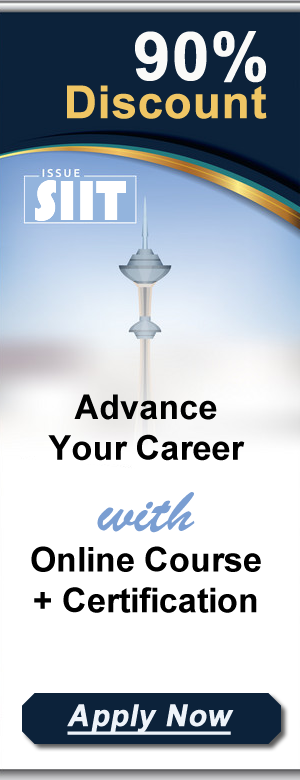
Zachary Morse: Preparing For Lunar Exploration
A Geologist's Journey to the Moon
Zachary Morse, an assistant research scientist in planetary geology at NASA's Goddard Space Flight Center, embodies the spirit of lunar exploration. His work transcends the confines of a laboratory, extending to the rugged terrains of Earth, where he tests equipment and refines strategies for future missions to the Moon and Mars. Morse's dedication to fieldwork is pivotal in bridging the gap between theoretical understanding and practical application in space exploration. This commitment highlights the crucial role of analog sites in preparing for the challenges of extraterrestrial environments. The selection of these sites requires meticulous geological analysis to ensure a close resemblance to the target celestial body, thereby maximizing the realism and efficacy of the testing process. Morse's involvement with the Rise2 project, focusing on handheld geologic instruments, further emphasizes the importance of technological innovation in space exploration. The development and rigorous testing of these instruments are paramount for optimizing scientific data collection on future missions. The portability and robustness of these instruments are being heavily scrutinized to ensure they can endure the harsh conditions of the lunar and Martian surfaces.
The significance of Morse's work extends beyond the technological advancements; it encompasses the human element of space exploration. His participation in training exercises for crewed lunar missions underscores the importance of preparedness and effective collaboration in complex, remote environments. His insights into the practical limitations and potential challenges of working in such an environment are invaluable for mission planners and astronauts alike. The collaborative aspect of his work within the Goddard Instrument Field Team further strengthens the emphasis on teamwork and the integration of diverse expertise in the pursuit of scientific discovery. This collaborative approach ensures that the instruments and strategies under development are thoroughly vetted and robust, capable of successfully navigating the demands of lunar and Martian environments. His expertise extends to the careful documentation of field sites, crucial for preserving the integrity of the research. Understanding the pre-exploration condition of these sites is vital for evaluating post-exploration effects and drawing accurate conclusions from the findings.
Fieldwork: Iceland, Hawaii, and Beyond
Morse's fieldwork experiences offer compelling case studies in analog site utilization. His expeditions to Iceland, Hawaii, and the New Mexico desert provide diverse challenges and opportunities for testing and learning. The stark lunar-like landscapes of Iceland served as a remarkable setting to test equipment under conditions closely resembling those anticipated on the Moon. The volcanic terrains of Hawaii provided a unique opportunity to explore lava tubes, presenting challenges related to navigation and instrument functionality in confined spaces. The extensive use of analog sites underscores the importance of practical experience in simulating the difficulties inherent in operating equipment and conducting scientific research in alien environments. The choice of these specific locations was carefully considered to maximize their utility in preparing for the challenges of future extraterrestrial missions, thereby minimizing risk and maximizing the success of future space ventures.
The logistical demands of these expeditions also highlight the importance of planning and resource management in extraterrestrial exploration. Managing a team of 30-40 individuals in remote, challenging environments requires meticulous preparation and adaptability. These collaborative expeditions necessitate expertise across several domains, highlighting the complexity of space missions and the interdisciplinary nature of the preparation process. The shared experiences of these trips forge valuable bonds amongst team members, creating a more cohesive and efficient work environment that is crucial for the success of ambitious space endeavors. The data collected from these expeditions are not merely scientific; they provide valuable insights into human factors, logistics, and the challenges of working in extreme conditions. This holistic approach maximizes the learning experience and enhances the overall success of future space endeavors.
Mentorship and Inspiration: Shaping Future Explorers
Morse's career trajectory is shaped by mentorship and inspiration from figures such as Kelsey Young, his supervisor, and Jack Schmitt, the only geologist to walk on the Moon. Young's guidance has been instrumental in shaping Morse's approach to fieldwork and mission design. Her experience and insight into the practical aspects of space exploration provide Morse with a valuable framework for his research. Schmitt's legacy as a geologist-astronaut serves as a powerful source of inspiration, illuminating the potential for future integration of geological expertise in space exploration. The combination of practical guidance and aspirational goals drives Morse's dedication to his work and fuels his enthusiasm for advancing lunar exploration.
Mentorship is a vital element within the broader context of scientific and engineering communities. The guidance received by Morse from his supervisor underlines the importance of transferring knowledge and experience across generations. This mentorship relationship fosters a culture of growth and development within the scientific community and ensures the continuity of expertise in critical fields such as space exploration. The influence of astronauts like Jack Schmitt on young scientists and engineers further strengthens the link between aspiration and achievement. The example set by Schmitt demonstrates the feasibility of merging scientific expertise with the demands of space travel and inspires future generations of scientists to pursue careers that bridge the gap between Earth-based research and space exploration.
Future Endeavors and Broader Implications
Morse's aspirations to participate in a lunar mission highlight the growing momentum in human space exploration. The Artemis program, with its ambitious goal of returning humans to the Moon, provides a framework for Morse's aspirations and offers a tangible pathway for his expertise to contribute to the advancement of space science. His dedication underscores the importance of sustained investment in scientific research and technological development to support such ambitious goals. The success of the Artemis program will depend not only on technological advancements but also on the preparedness and expertise of the scientists and engineers involved.
The broader implications of Morse's work extend to the advancement of planetary science and our understanding of the solar system. The research conducted in analog sites provides valuable insights into geological processes, which have implications for understanding the formation and evolution of celestial bodies. The data collected from Morse's fieldwork contributes to a larger body of knowledge, enriching our understanding of Earth's geological history and informing our predictions about the geological composition and features of other planets. Furthermore, the development of advanced field instrumentation has broader applications beyond space exploration, impacting other scientific fields like geology, environmental science, and resource exploration.
Conclusion: A Path Forward
Zachary Morse's dedication to fieldwork exemplifies the crucial link between ground-based research and the pursuit of lunar exploration. His work highlights the interdisciplinary nature of space exploration, encompassing geological expertise, technological innovation, and effective team collaboration. His aspirations reflect the broader momentum in space exploration and the growing opportunities for scientists and engineers to contribute to humankind's understanding of the universe. His journey represents not just a personal pursuit but also a significant step towards the future of space exploration. His dedication serves as a powerful reminder of the dedication, ingenuity, and collaboration necessary for successful space exploration. His work signifies a crucial advancement in the pursuit of lunar missions, reflecting the synergy between scientific research, technological development, and the spirit of human exploration.

